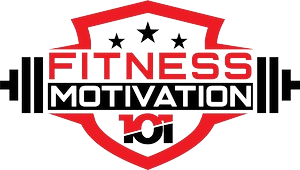Dumbbells are one of the most versatile pieces of fitness equipment, allowing you to target multiple muscle groups, improve strength, and enhance endurance. Whether you're a beginner or an experienced lifter, learning how to use dumbbells correctly is crucial for maximizing benefits while preventing injuries.
In this guide, we'll cover everything from choosing the right weight to proper techniques and crafting an effective workout routine.
Choosing the Right Dumbbell Weight
Selecting the Perfect Weight for Your Fitness Goals
One of the most common mistakes beginners make is choosing the wrong dumbbell weight. Selecting weights that are too light may not provide enough resistance, while weights that are too heavy can lead to improper form and injuries.
How to Choose Dumbbells That Challenge Without Overwhelming
Factors to Consider When Selecting Dumbbell Weights:
- Your Fitness Level: If you're a beginner, start with lighter weights (5–10 lbs for upper body, 10–20 lbs for lower body).
-
Your Goals:
- If your goal is muscle endurance, choose lighter weights with higher repetitions (12–15 reps).
- If you want to build strength, go for moderate to heavy weights (6–10 reps per set).
- For muscle growth (hypertrophy), use a weight that challenges you within 8–12 reps.
- Muscle Group Being Trained: Larger muscle groups (legs, chest) require heavier dumbbells than smaller ones (arms, shoulders).
- Progression: As you get stronger, gradually increase your dumbbell weight by small increments.
How to Test If You Have the Right Weight:
- You should be able to complete all reps with good form but feel fatigued in the last 2–3 reps.
- If you can do more than your target reps without struggle, increase the weight.
- If you struggle with the first few reps, lower the weight to avoid injury.
Basic Dumbbell Exercises
Essential Dumbbell Exercises for Beginners
Dumbbells are perfect for building strength with functional, full-body movements. Here are some must-know beginner-friendly exercises:
1. Bicep Curl (Targets: Biceps)
- Stand with feet shoulder-width apart, holding a dumbbell in each hand with palms facing forward.
- Curl the dumbbells towards your shoulders, keeping elbows close to your body.
- Lower back slowly. Repeat for 10–12 reps.
2. Shoulder Press (Targets: Shoulders)
- Hold dumbbells at shoulder height with palms facing forward.
- Press them overhead until the arms are fully extended.
- Lower back to shoulder level. Perform 8–12 reps.
3. Chest Press (Targets: Chest, Triceps)
- Lie on a bench or floor, holding dumbbells at chest level.
- Press the dumbbells upward until the arms are straight.
- Lower them back slowly. Perform 8–12 reps.
Advanced Dumbbell Exercises
Taking It to the Next Level: Advanced Dumbbell Exercises
Once you've mastered the basics, challenge yourself with these advanced moves:
1. Goblet Squat (Targets: Legs, Glutes, Core)
- Hold a dumbbell close to your chest with both hands.
- Lower into a squat, keeping your chest up and knees aligned.
- Push through your heels to return to standing. Do 10–12 reps.
2. Burpees with Dumbbells (Targets: Full Body)
- Hold dumbbells at your sides, lower into a squat, and place dumbbells on the floor.
- Jump your feet back into a plank position.
- Perform a push-up, then jump your feet forward and stand up.
- Press dumbbells overhead to finish. Do 8–10 reps.
Safety Precautions and Proper Form
Safety First: Avoiding Injuries with Proper Form
Using dumbbells improperly can lead to muscle strains and injuries. Follow these dumbbell safety tips:
- Maintain Proper Form: Keep your back straight, engage your core, and avoid jerky movements.
- Control Your Motion: Don't use momentum—lift and lower weights slowly to maximize muscle engagement.
- Breathe Correctly: Exhale when lifting, inhale when lowering.
- Use a Mirror: Watching your form can help you correct posture mistakes.
- Warm Up and Cool Down: Always start with dynamic stretching and end with light stretching to prevent injuries.
Creating a Workout Routine
Crafting Your Ideal Dumbbell Workout Routine
A well-structured dumbbell routine helps you achieve specific fitness goals.
For Strength Building (3–4 Days a Week)
- Day 1: Upper Body (Chest Press, Shoulder Press, Bicep Curls)
- Day 2: Lower Body (Goblet Squats, Deadlifts, Lunges)
- Day 3: Full-Body (Burpees with Dumbbells, Plank Rows, Farmer's Carry)
For Weight Loss (4–5 Days a Week, High Reps & Low Rest)
- Circuit Training: Perform five exercises back-to-back for 30 seconds each.
- Examples: Jump Squats, Dumbbell Swings, Shoulder Press, Deadlifts, Russian Twists.
For Muscle Endurance (3–5 Days a Week, 12–15 Reps)
- Focus on lighter weights with more repetitions.
- Combine dumbbell exercises with bodyweight movements.
Recommended Products
To get the most out of your workouts, having the right gear matters. If you're looking for high-quality yoga mats, check out Fitness Motivation. Their mats provide:
- Superior grip and support for stability during dumbbell exercises.
- Durability to withstand heavy workouts.
- Cushioning to protect joints during floor exercises.
Using a quality mat ensures safety, especially when performing floor-based dumbbell workouts like chest presses and sit-ups.
Conclusion: Unlocking Your Potential with Dumbbells
Start Your Journey to Strength and Fitness Today
Dumbbells are an incredible tool for building strength, burning fat, and improving overall fitness. By following the right techniques, maintaining proper form, and using a structured workout routine, you can maximize results while staying injury-free.
Ready to take your fitness to the next level? Pick up those dumbbells and start training today! 💪

